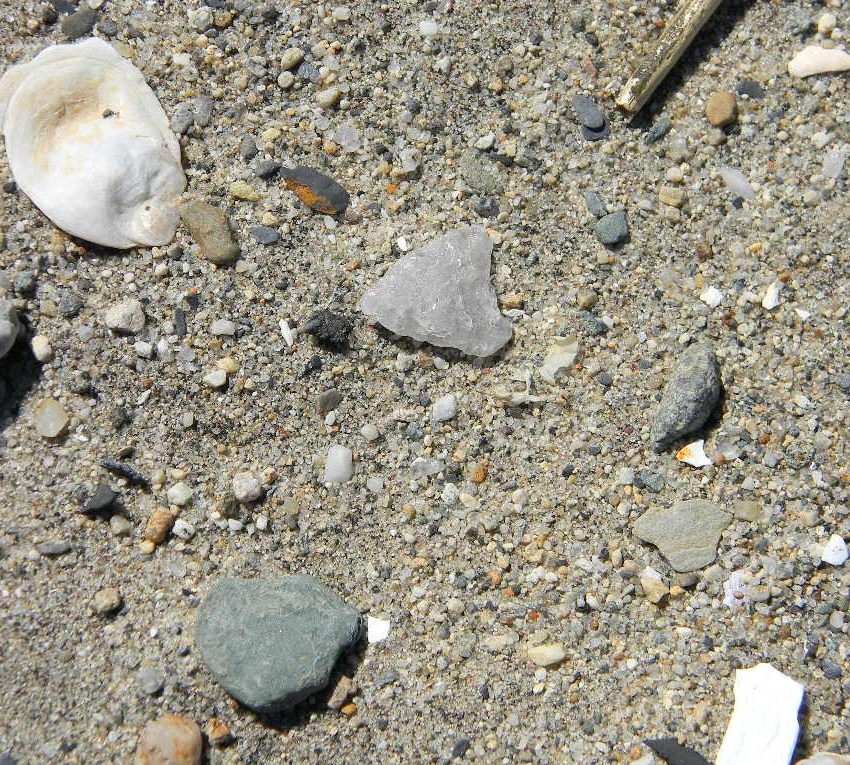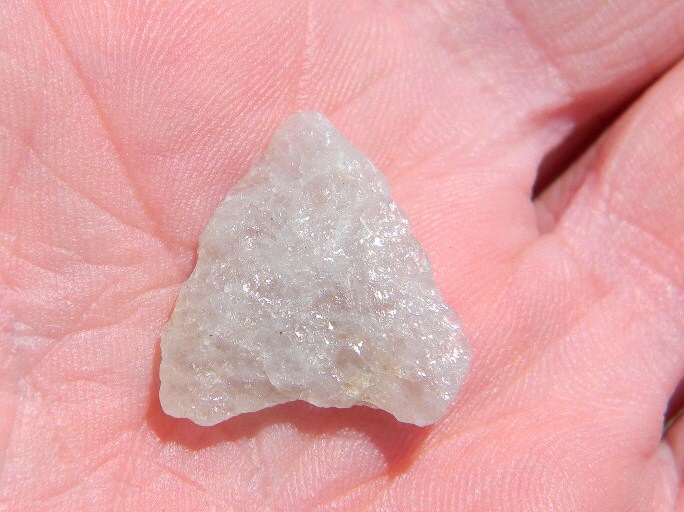Once thought to date from the Late Archaic, Squibnocket Triangles are now known to have made their first appearance ax early as the Middle Archaic. Probably the most common Archaic triangle in southern New England and Long Island. For the most part these are small triangles with concave bases, and convex sides. Equilateral triangle forms are the most common, but narrow isosceles triangles also fit the description, and some may show pentagonal blades. Named for the Squibnocket Pond site on Martha's Vineyard, which was excavated by Ritchie. By definition, Squibnocket triangles lack grinding. This helps distinguish them from smaller Levannas and Beekman triangles, which are also an Archaic form in the Northeast. Here is Ritchie's description from his NY typology:
Examples from coastal,RI. Quartz is by far the most common material used. Note the forms, including one with a pentagonal blade to the right of the penny:

Examples from coastal,RI. Quartz is by far the most common material used. Note the forms, including one with a pentagonal blade to the right of the penny:




Comment